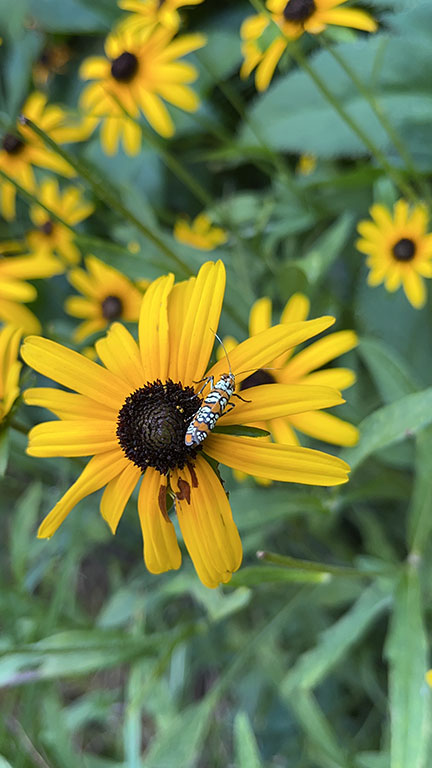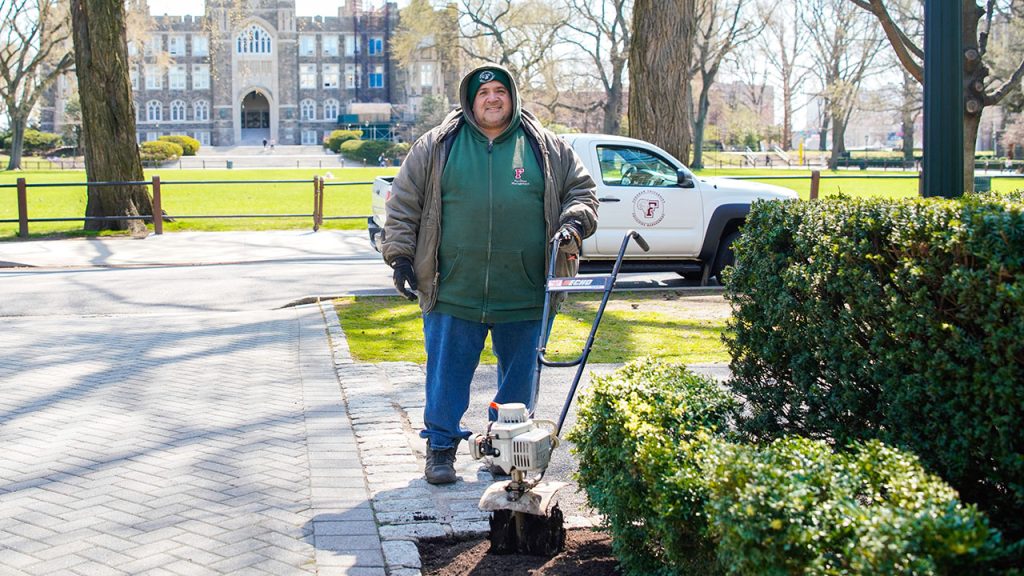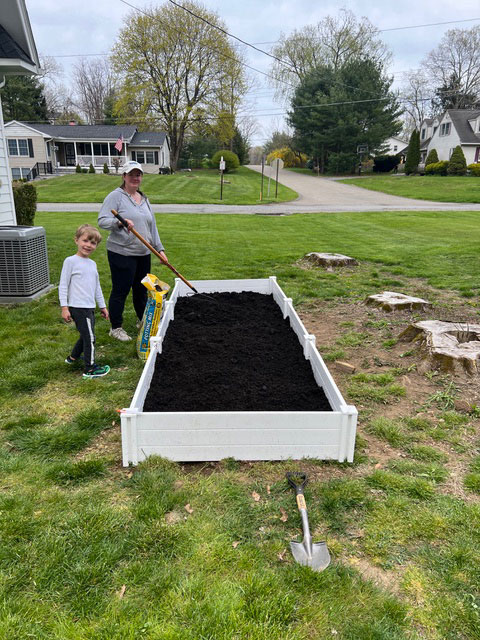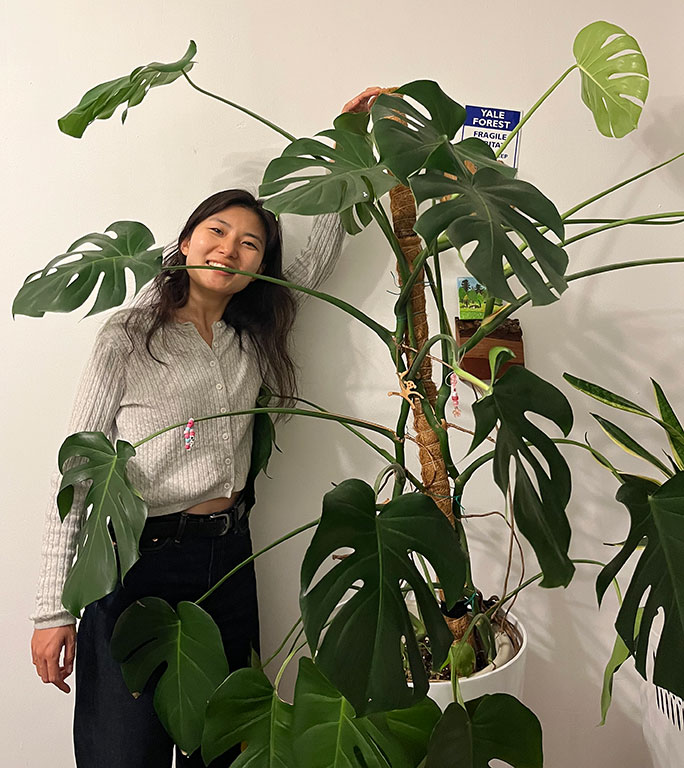If visions of homegrown vegetables and gorgeous flowers are dancing through your head this time of year, you’re not alone. It’s estimated that people in 55% of American households garden, and about 37% of households have at least one plant.
The National Gardening Association has plenty of great tips for aspiring gardeners, but we also know Fordham has some amazing weed warriors and green gurus willing to share advice on how to make this season a fruitful one.
Preparing Beds for Flowers
As Fordham’s assistant gardener, Jason Cruz oversees the planting of 200 to 300 hydrangeas, pansies, geraniums, and sunpatiens around the Rose Hill campus. High-profile areas like the space around Cunniffe House need to look their absolute best for Easter, so the past few weeks have been all about prepping soil beds.
To prepare the beds for the day the flowers arrive from the nursery, Cruz uses a few tricks gardeners can try at home: He mixes in soy conditioner every two years, and this time of year, he also mixes in Coast of Maine’s Dark Harbor mulch. For him, it’s both an aesthetic and a practical choice.
“We’ll plant the plants, and then we’ll throw a top dressing of the mulch, so you have this really nice dark background with all these vibrant colors.”
Planting with Pollinators in Mind
Chomri Khayi, who was hired last year as the first land manager of the Calder Center, Fordham’s biological field station in Armonk, New York, has been focused on a large pollinator garden behind Calder Hall. Her advice? For the sake of bees and other pollinators, don’t clear the ground too early.
“Everyone’s tempted to clean up everything and have this aesthetically pleasing space, but it would be wiser to minimize that cleaning as much as possible or even delay it,” she said.
She said to wait until mid to late April, when temperatures consistently stay above freezing, to clear away things like dead leaves that are carpeting the ground.
“There are beneficial insects that rely on that ground cover for protection.”

Serena Feldman, a Fordham ecology master’s student who previously worked as a land steward at the Nature Center at Greenburgh in Scarsdale, New York, recommended planting native plants when possible. Black-eyed Susans, purple coneflowers, and mountain mints are great choices, because they’re beneficial to insects and birds that are key to the local ecosystem.
“Ask yourself if you’ve ever seen a bee land on a petunia or a butterfly sit on a begonia. It just doesn’t happen because those plants weren’t bred to be valuable for pollinators in general,” she said.
Building Raised Beds
When he moved to Patterson, New York, last year, Justin Pool grew mini pumpkins, green beans, and peppers in raised beds. Pool, a senior lecturer of biological sciences and faculty director of STEM strategic initiatives, learned from that experience not to underestimate the cost of the soil you will need to fill a bed properly. He also had some advice on materials.
“For a raised bed, plain cardboard on the bottom makes for great weed control and is biodegradable, with no nasty plastic to deal with,” he said.
“Just make sure all the tape has been removed, lay it on the ground, and add your garden soil on top of it.”
Potted Plants for City Living
Annika Hinze, an associate professor of political science and director of Fordham’s Urban Studies Program, relies on pots to plant outside her house in the Bronx neighborhood of Riverdale.
“Two years ago, I discovered that Stew Leonard’s sells bags of pollinator seeds for around five bucks. I found them to be super potent, and the first week of April is the perfect time to start them,” she said.
“I also have a rhododendron, which is about to bloom. It makes the prettiest pink blossoms, and my mom, who passed away in 2021, helped me buy it. I like to think she’s saying hello every time it blooms.”
Caring for Indoor Plants
And if you live in an apartment, indoor plants also react to the changes in temperature and light that the spring brings. Khayi tends to 16 plants in her Manhattan apartment, including a very large monstera deliciosa.
“With the heat on during the winter, they tend to dry out a lot,” she said.
“So around late March, I start to feed them a little Miracle Grow every two weeks just to increase or to help them come out of the dormant phase.”
Adrian Kochanowicz is also paying special attention to his indoor plants.
In August, Kochanowicz joined Fordham’s Office of Military and Veterans’ Service, and he brought three plants to his Lincoln Center office: a calathea medallion; a philodendron hederaceum; and a Aglaonema Siam Aurora, also known as a Red Chinese Evergreen.
They get no light from the sun (he uses a grow light), but they still react to the change of the seasons, so he’s also started to fertilize them every two weeks. His advice is to water less, as it’s very easy to overdo it.






